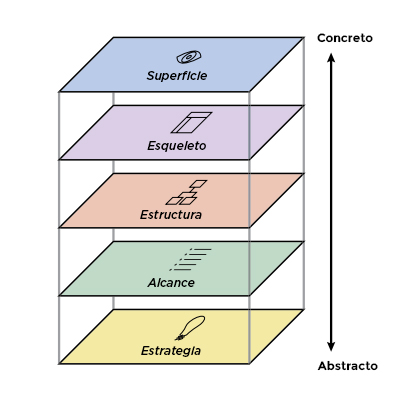Creating micro contents addressed to eLearning teaching or microlearning is not a trivial matter but all the contrary, there are a lot of key strategies and factors to consider when we design a course or training activity. We reiterate the importance of creating interesting, motivating, relevant, accessible, and, all in all, user-oriented training activities.
In this blog, we want to share with you some key strategies so that you can create efficient, motivating and engaging learning objects for your learners. To this end, we have taken the 10 strategies proposed by Shift Learning to create eLearning content as a starting point, and we have adapted them for the creation of microcontent. If you find it interesting, check out their publication.
Let’s begin with the first 5!
Developing relevant and catchy micro contents
1. Think about your students, step into their shoes
As an educator, you want to stimulate, encourage and motivate your students, inspire them to learn. In order to achieve so, it is essential to provide them what they need.
Besides taking into account their age, knowledge and previous experience, job position… it is convenient to think which are their desires, aspirations and expectations; regarding their personal and professional life, as well as in relation to the course you are just about to offer them.
Consider which can be their attitude towards the course, their opinions, what do they want to attain after it, which strategies can help them to achieve their objectives, what can frustrate them or which obstacles can they find… what is the most important for them.
Your target should be to get them involved in the training activity from the very beginning by using some key strategies, get their attention and make them participate actively over the whole process, make them feel an emotional connection with the topic you are presenting. For that purpose, storytelling is important (transmitting a message by means of stories and experiences).
Make the learning pleasant and enjoyable as well as interactive besides managing to get engaging visual elements.
2. Organize your ideas before writing
Before getting down to work and writing your content, draw up a plan.
It is crucial to think and meditate about the needs of the learners and how to satisfy them, and from there on, organize the material with which you’re going to work, divide it into modules, define your primary and secondary objectives, choose the techniques you’re going to use for presenting the content and the most suitable and natural learning sequence.
3. Get close to the learner
Use the second person singular “you” to address your learner, connect to him/her. Address him/her as if you were speaking with your friend.
If you think about it, what do you find easier to remember? the statistics that were explained during a conference, or a conversation you had with your friend at the bar?
The art of simplification can help you more than you think, people are more perceptive when the training activity uses common language because it allows us to concentrate only on understanding the concepts and learning, instead of having to find meaning and sense to the words and structures we’re facing.
Therefore:
- Stop writing in abstract terms.
- Use analogies to explain technical concepts.
- Explain acronyms the first time you introduce them.
- Delete all those adjectives and adverbs which are not essential.
- Use technical terms or jargon of a determined field only when strictly necessary.
- Write short sentences.
4. Prepare your text to be skimmed and scanned
Think that your learners are busy people, with a tight schedule, who dispose of little leisure time. Think, moreover, that nowadays we suffer the so-called “infoxication” (information overload) so your learner will feel more inclined to pay attention to a 140-character text than to a 2-page PDF file.
What do you do when you visit a newspaper website? Do you read it all? Or do you skim and scan the website by reading the keywords, the titles, the lists… until you find something you find interesting to read it in full?
Do not overload, Take into consideration that your learners are likely to only look over the content. They should find it easy to identify the main ideas you’re talking about.
Besides, evidence shows that when we read on screen, we make it 25% slower than when we read printed documents.
Then:
- Divide information into small portions (bite-sized learning pills).
- Divide your text into short paragraphs.
- Write short sentences too.
- Structure and prioritize. Write the most relevant information at the beginning or at the end of the text.
Your reader should easily understand what the text is about and notice the main ideas by only scanning it.
5. Avoid verbosity
There is a general tendency to explain something more than necessary, up to the point we bore the learner.
If necessary, rewrite a text until you get its simplest form. If something can be explained in 50 words instead of 100, make it. Economize. Your learner will understand the concepts easier and quicker. Remember: relevant and catchy micro contents.
- Explain it in a few words; use only those which are strictly necessary.
- Make use of concise, clear, coherent, eloquent, and natural sentences as well as simple terms.
- Don’t use the passive unless it’s absolutely necessary. Passive sentences require longer structures than active ones.
- Organize your text in short and organized paragraphs.
- Go straight to the point and the key strategies.





Pingback: Developing relevant and catchy microcontents: Key strategies (II) - Snackson